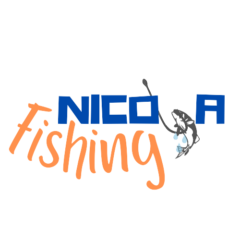Finding the best fishing knots for your needs can be difficult. There are numerous knots and knotting methods, but they all have one thing in common: they must be secure! If you want to keep your line from breaking or your bait from falling off, you’ll need to find the right knot for the job.
When you’ve decided on the best type of knot for your needs, you’ll need to know how to tie it correctly. You don’t want to tie a knot that will fall out when you need it the most.
This article will go over some of the different types of knots and how to tie each one correctly.
Types of Fishing Knots
Depending on the situation, we have different types of fishing knots. Some of the most popular are listed below.
Square Knot
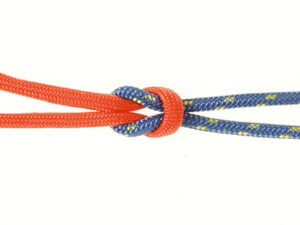
The square knot is used to connect two ends. It is also known as the reef knot because it was originally used to connect lines before using a rope. The square knot is simple to tie, but it has one major disadvantage.
It can easily slip out of place if tied incorrectly. As a result, it should only be used with extremely strong materials such as nylon. Begin by forming an X with both ends of the square knot.
Then, reattach the two ends so that there is no space between them. Finally, pull the ends through the center until they are both tight.
Figure 8 Knot
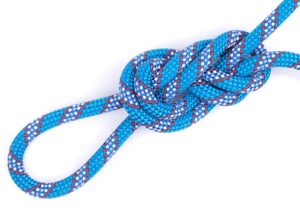
This knot is similar to the square knot, but it has eight parts instead of four. It is frequently used to connect two pieces of rope. It is simple to tie, similar to a square knot, and will not slip if done correctly. It does not, however, work well with weak materials.
Lanyards are made from it due to their strength. To tie the figure 8 knot, take one end and wrap it three times around the other.
Tighten everything by pulling the last loop through the first loop. The figure 8 knot is used to attach a hook to a leader when fishing.
Overhand Knot
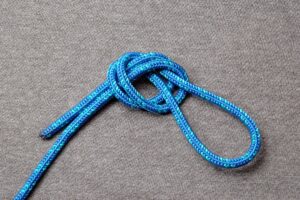
The overhand knot is another simple knot used for tying things together. It’s simple to tie and works well with any material.
This knot is particularly useful when you need something to stay in place while fishing. It can also be used to secure hooks to leaders.
Fold the rope into half-inch sections to tie the overhand knot. Bring the rope ends together and tie them together. Trim the excess rope after you’ve finished.
Bowline Knot

A bowline knot is one of the most powerful knots. It’s ideal for holding a line taut while casting a lure. It can even be used to make loops for hanging objects like flies.
Begin by taking a six-inch piece of rope and tying a bowline knot. Fold the rope in half and thread it through itself. Bring the two ends back together and pass them through the center of the rope once more.
Pull the ends of the thread through the center until they are snug against each other. Remove any excess rope, and you’re ready to go!
Clove Hitch
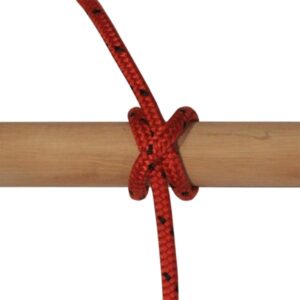
Clove hitches are used to connect two ropes. Because they were originally used to tie fishermen’s nets, they are also known as fisherman’s knots. Clove hitches come in a variety of shapes and sizes, but the basic concept remains the same.
Begin by bringing the rope’s ends together and passing them through the center. Repeat this process until you reach the desired length.
Bring the ends back together and pass them through the center a second time. Pull the rope all the way through until it is snug against itself.
Palomar Knot
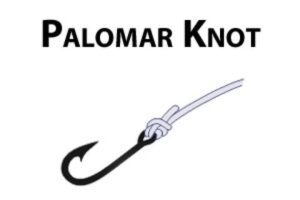
The Palomar knot is a simple knot used to secure a boat to a dock or pier. To tie a Palomar knot, make a loop at one end of a piece of rope.
Pass the free end through the loop, then pull it through the loop. Repeat this process until you’ve tied enough knots to keep your boat securely in place.
Sheepshank Knot
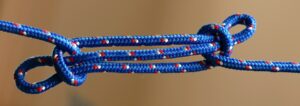
Sheepshanks are used to connect two ropes. Sheepshank knots are another name for them. The name is derived from their shape, which is similar to a sheep’s foot. These knots are extremely strong and can withstand heavy loads.
The sheepshank knot is a hybrid of two different knots: the sheet bend and the granny knot.
To begin tying a sheepshank knot, make a small loop in one end of the rope. Please take the free end and feed it through the loop.
Then, run the free end through the loop again until it meets the original end. Finally, tighten the loop by pulling both ends of the rope through it.
Loop Fishing Knot
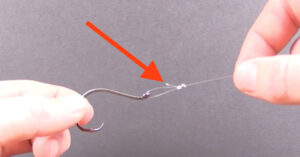
It is a versatile knot that is commonly used to attach lures to lines. It is also known as the “Texas Lariat” because it was invented in Texas.
Make a loop near one end of a short piece of rope to tie a loop fishing knot. Place the loop on top of the line and wrap the remaining rope several times around it.
Make sure there are no gaps between the rope and the line when you tie the knot.
These knots are commonly used for lures, but they are also excellent for attaching hooks to lines.
Snell Knot
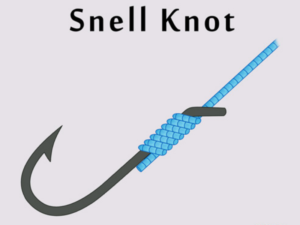
Another popular fishing knot is the snell knot. This knot is used to secure a hook to a fishing line.
To tie a snell knot, thread a short piece of rope through the eye of a hook.
Wrap the remaining rope several times around the hook. Trim any excess material once you’ve finished wrapping the rope.
Blood Knot

To connect a leader to a fly rod, blood knots are used. A double overhand knot is used to tie a blood knot. To tie a blood knot, fold a short piece of rope into thirds.
Bring the folded end of the rope through the loop and around the middle of the rope. Once the knot is formed, tighten it by pulling on the rope’s tail.
Factors to Consider When Tying a Fishing Knot
Consider some factors when selecting a fishing knot that will assist you in selecting the best knot for your needs.
- Strength
Always use a knot that is strong enough to withstand the load you intend to apply to it. If you intend to use a knot to secure a heavy object to a surface, such as a whale, make sure the knot can support its own weight.
- Tightness
Another consideration when choosing a fishing knot is how well it holds. You want to be able to untie the knot without straining yourself too much.
For example, if you’re trying to remove a lure from a line, you don’t want to waste time trying to undo the knot.
- Ease of Use
If you intend to tie multiple knots in a single session, consider how easy each knot is to tie. Some knots are more difficult to master than others.
- Flexibility
As previously stated, you should choose an adjustable knot to suit the type of application you have in mind. For example, if you plan on tying a lot of knots, you might want to invest in a set of pliers or other tools that will allow you to quickly change out your knots.
- Safety
Before attempting to tie a knot under duress, you must first learn how to do so properly. In an emergency, you want to be confident that you can undo the knot quickly.
Factors to Consider when Choosing the Right Type of Fishing Knot
Today, there are numerous types of fishing knots available. However, not all of them are appropriate for every circumstance. Here are some pointers on which knots are best suited for which situations:
- Lure Attachments
A simple slipknot is a good way to secure a lure to a line. Slipknots are simple and quick to tie. They’re also very secure because they can’t come undone by accident.
- Line Attachments
A surgeon’s knot is the best option for most line attachment situations. The knots used by surgeons are strong and secure. They can be made in either an overhand or underhand style.
- Leaders
A blood knot is used to secure a leader to a line. Blood knots are extremely versatile and can be used to create a wide range of knots.
- Fly Rod Locking Mechanisms
Many fly rods have locking mechanisms that keep the line from slipping off the reel while casting. These locks are typically made up of a friction lock and a snap-lock.
Friction locks are simpler to use, but they wear out faster. Snap-locks are more durable and last longer.
Frequently Asked Questions about Types of Knots for Fishing
Q: What is the difference between a fisherman’s loop and a clinch?
A: Because they were originally designed for use by fishermen, both are commonly referred to as “fisherman’s loops.”
Clinches are commonly used to join two pieces of material. Fishermen’s loops are commonly used to connect two pieces of material.
Q: Why do we need a fisherman’s hitch?
A: The fisherman’s hitch is a method of attaching a leader to a fly rod. It enables the user to customize the length of the leader. A regular knot would not work in this situation because it could become loose.
Q: What is a surgeon’s loop?
A: A surgeon’s loop is a type of blood knot. It was created specifically for use with leaders in mind.
Q: What are the advantages of using a surgeon’s hitch instead of a fisherman’s knot?
A: Using a surgeon’s hitch allows you to easily adjust the length of the connection without cutting the line. It is useful when connecting multiple lines.
Q: What should I look for when buying a new fishing hook?
A: There are several factors to consider when purchasing a new hook. To begin, select a hook size that is appropriate for your needs.
You should also think about how much weight you intend to add to the hook. Finally, you should examine the eye’s quality.
Q: Can I use a double fisherman’s knot for lures?
A: Yes, a double fisherman’s knot can be used for lures. This type of knot, however, is only appropriate for small hooks. A single fisherman’s knot should be used for larger hooks.
Q: Do I have to use a specific type of knot for each application?
A: No, you do not have to use the same knot in every situation. Knots come in a variety of shapes and sizes. Choose the one that is best suited to the task at hand.
Q: What kind of knot should I use if I am making an artificial lure?
A: Artificial lures necessitate the use of a slipknot, which is a type of knot. Slipknots allow you to quickly add and remove weights from the lure.
They are frequently preferred over other types of knots due to their ease of untying and reattachment.
Q: What does it mean to “tie in”?
A: Tying in means connecting the line’s end to the line’s beginning. If you tie the knot too tightly, it will be difficult to undo. If you tie it too loosely, the knot will not hold up well under pressure.
Final Thoughts
The correct knot is determined by the task at hand. Depending on the situation, some knots are better than others.
If you use the right knot for the job, you will be able to enjoy your time on the water.
